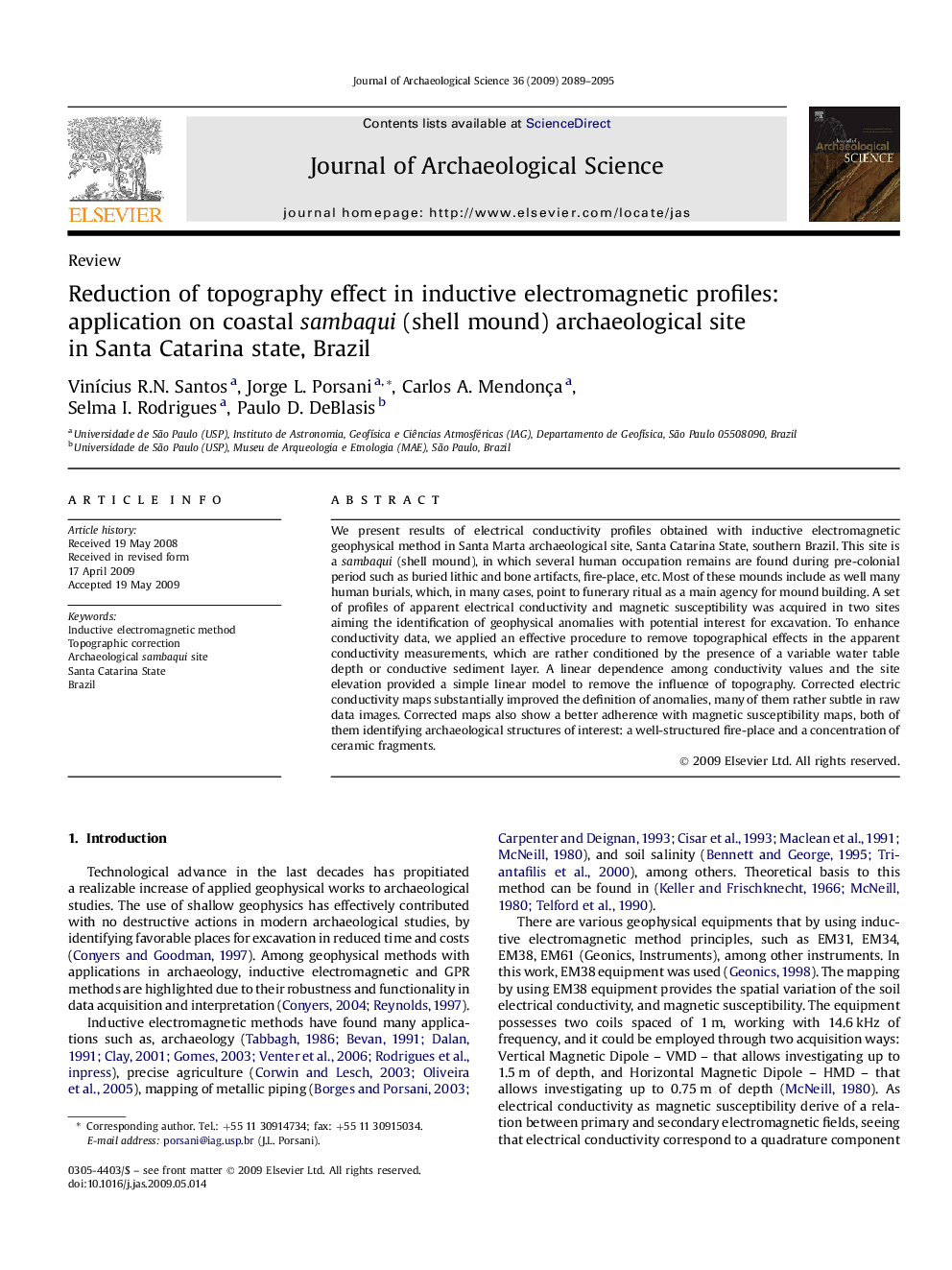| Article ID | Journal | Published Year | Pages | File Type |
|---|---|---|---|---|
| 1036381 | Journal of Archaeological Science | 2009 | 7 Pages |
We present results of electrical conductivity profiles obtained with inductive electromagnetic geophysical method in Santa Marta archaeological site, Santa Catarina State, southern Brazil. This site is a sambaqui (shell mound), in which several human occupation remains are found during pre-colonial period such as buried lithic and bone artifacts, fire-place, etc. Most of these mounds include as well many human burials, which, in many cases, point to funerary ritual as a main agency for mound building. A set of profiles of apparent electrical conductivity and magnetic susceptibility was acquired in two sites aiming the identification of geophysical anomalies with potential interest for excavation. To enhance conductivity data, we applied an effective procedure to remove topographical effects in the apparent conductivity measurements, which are rather conditioned by the presence of a variable water table depth or conductive sediment layer. A linear dependence among conductivity values and the site elevation provided a simple linear model to remove the influence of topography. Corrected electric conductivity maps substantially improved the definition of anomalies, many of them rather subtle in raw data images. Corrected maps also show a better adherence with magnetic susceptibility maps, both of them identifying archaeological structures of interest: a well-structured fire-place and a concentration of ceramic fragments.
